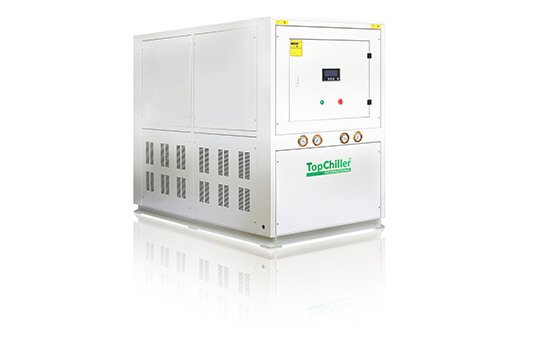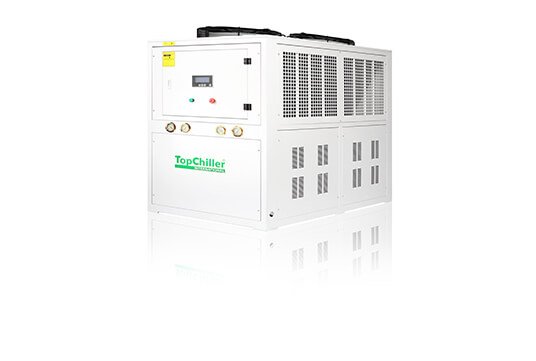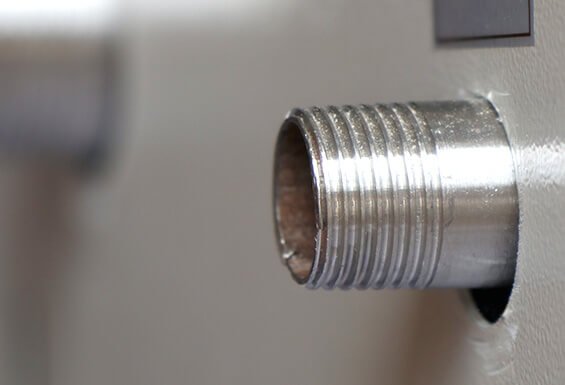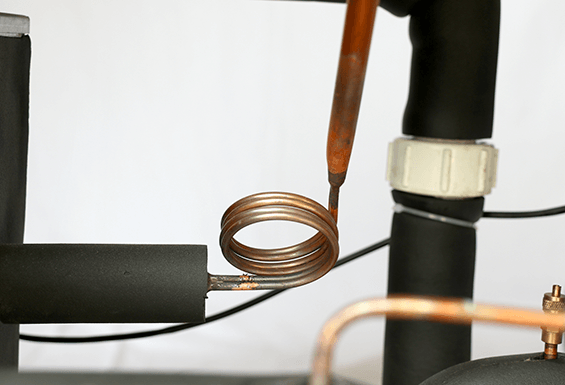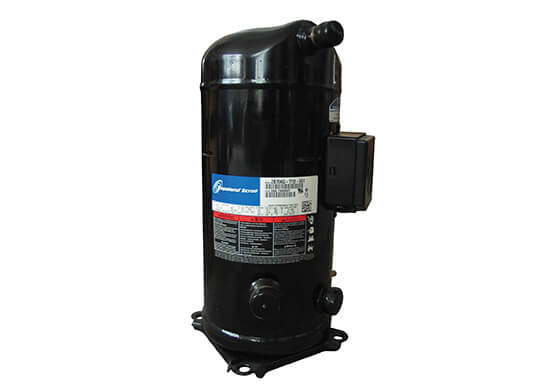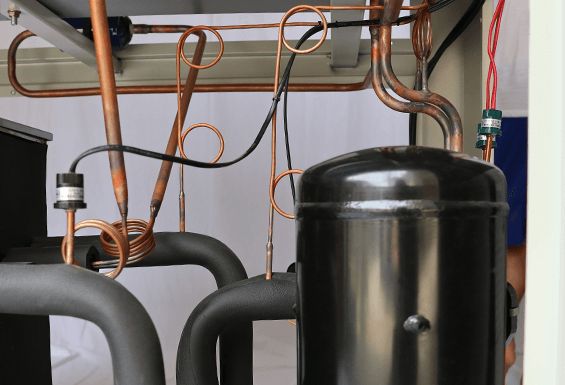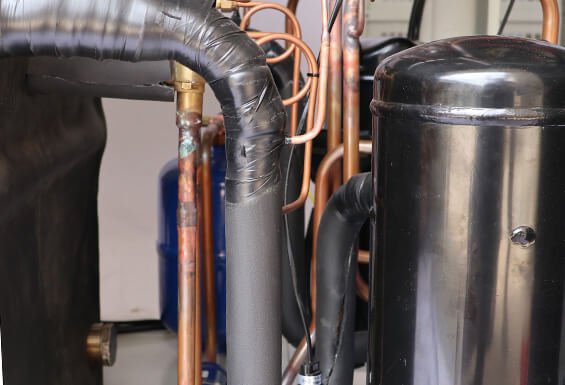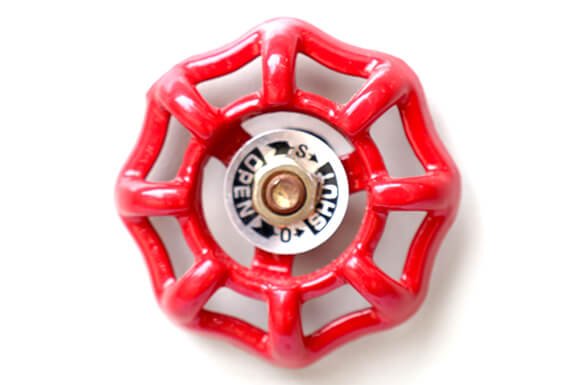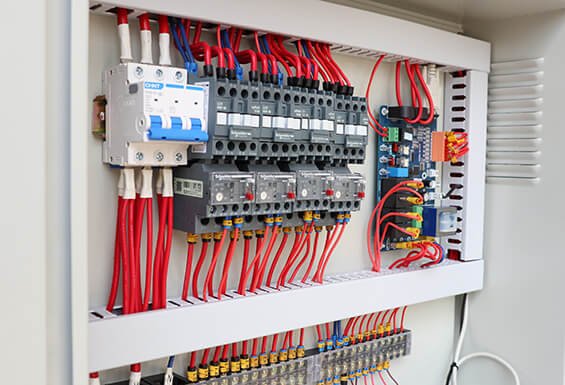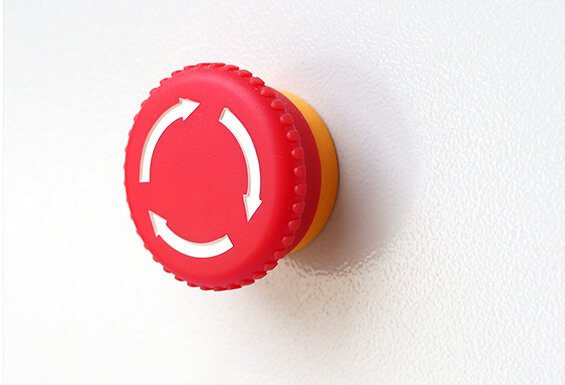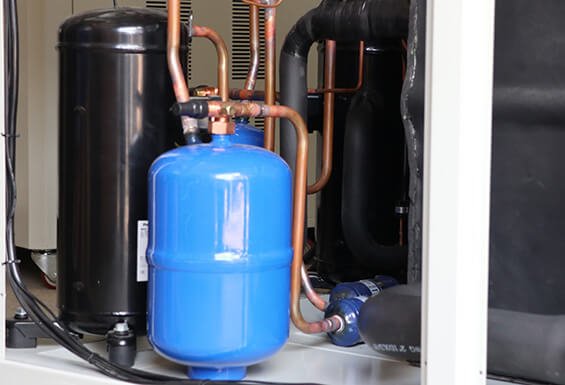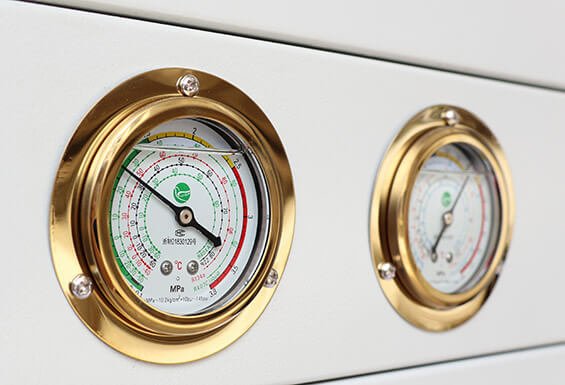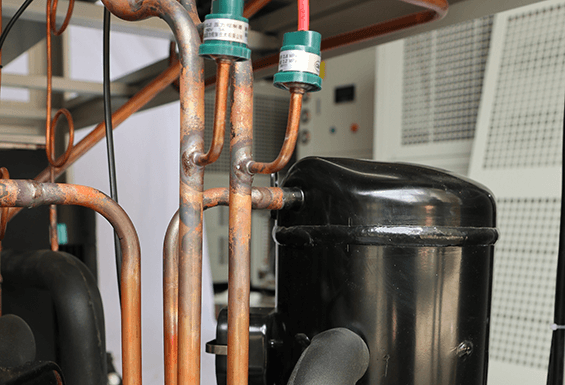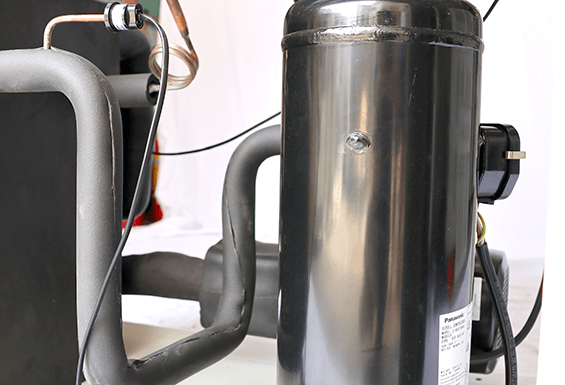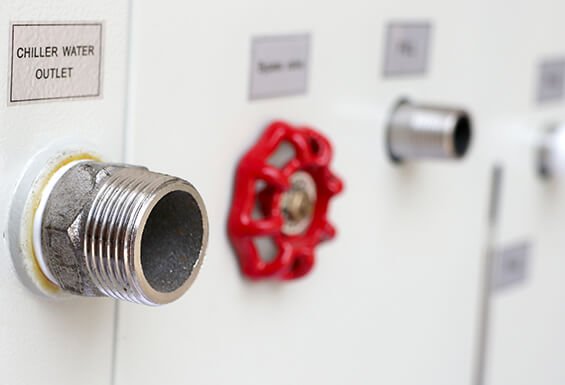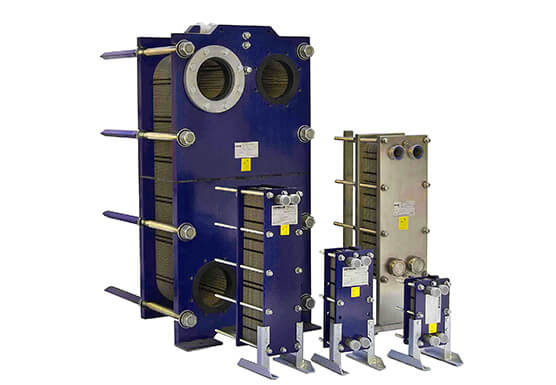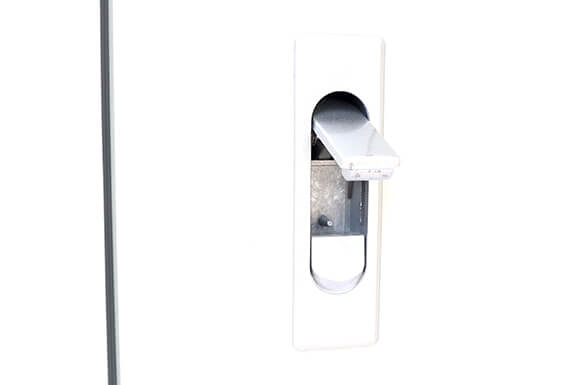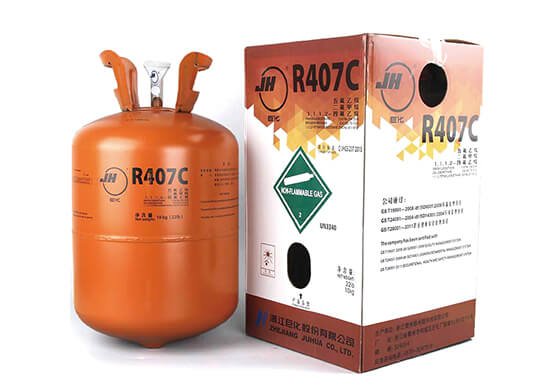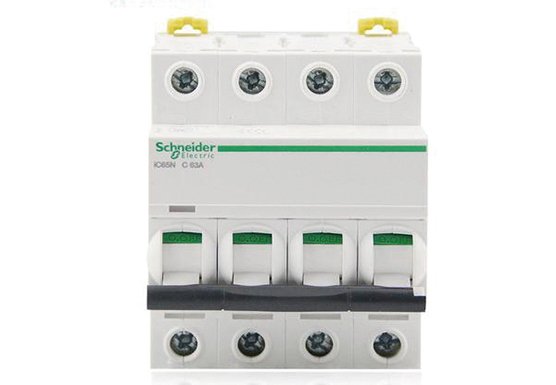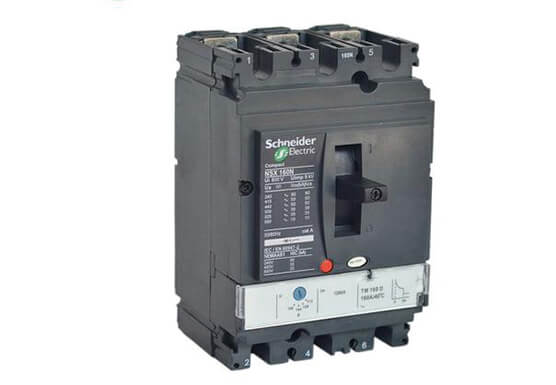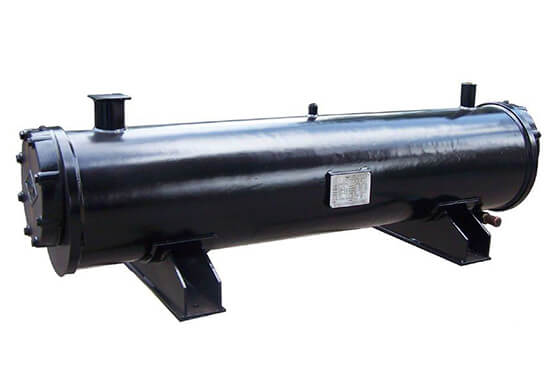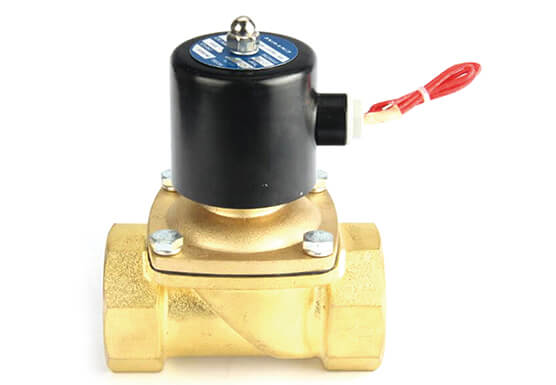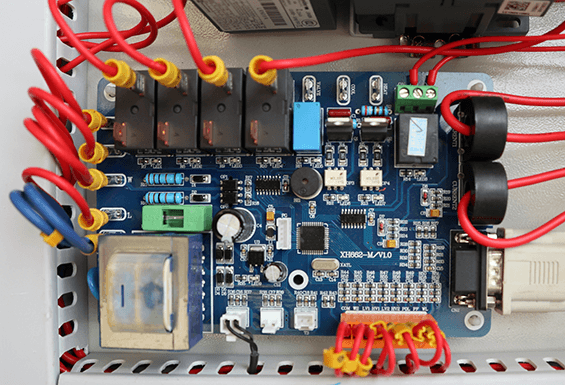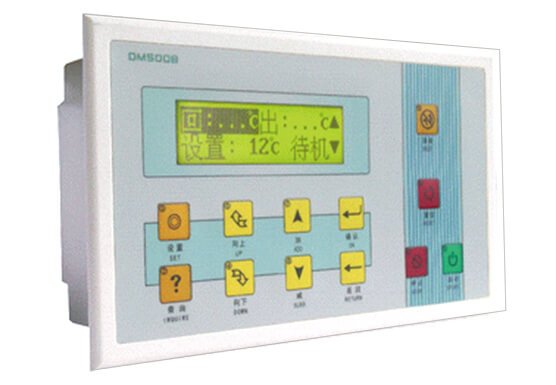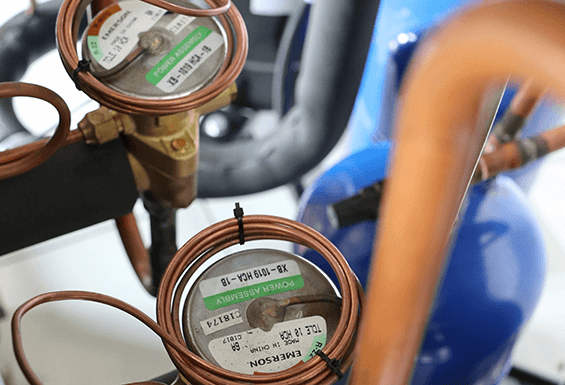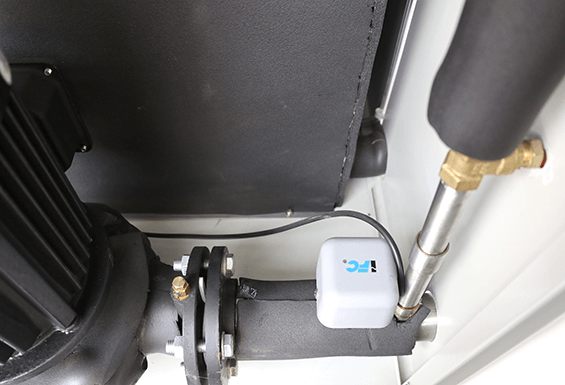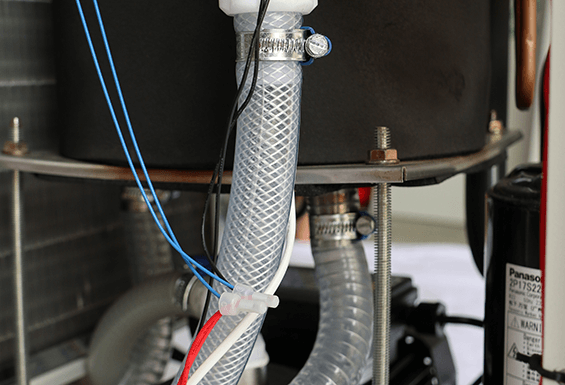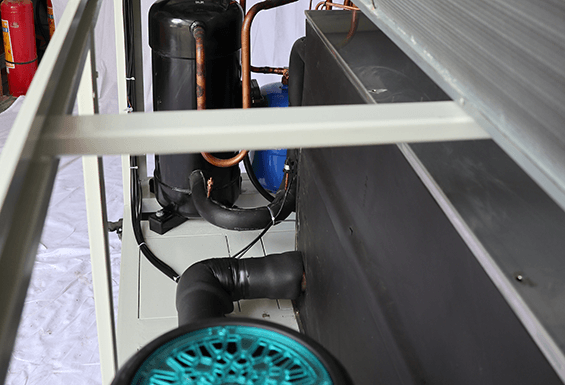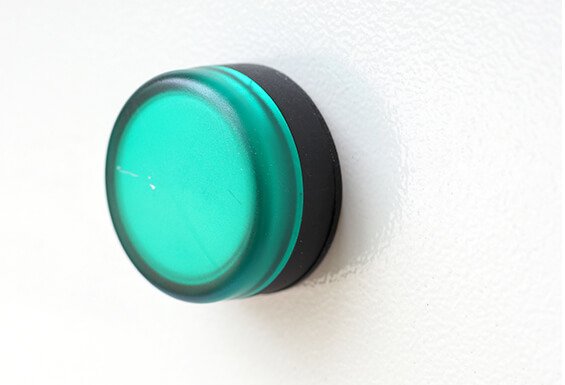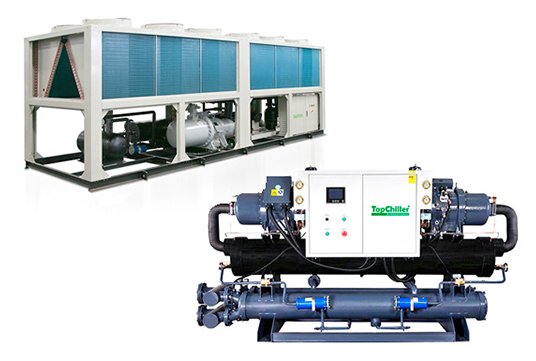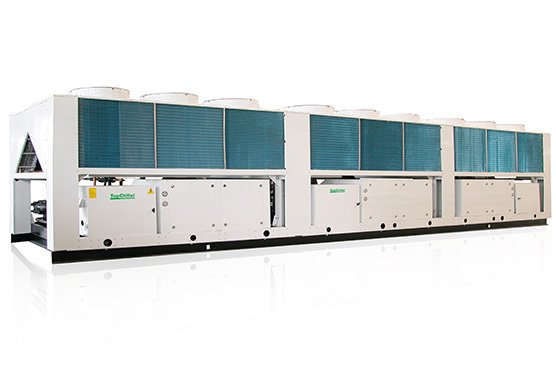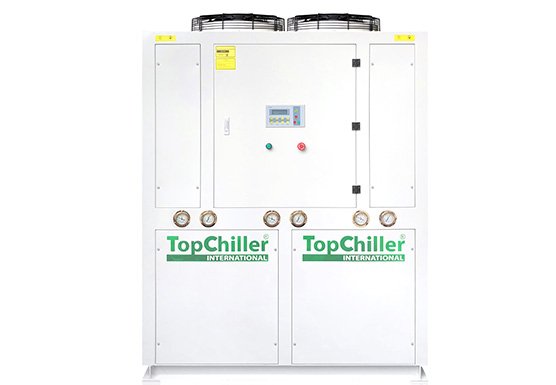TopChiller Can Design & Make All Types of Process Chiller Meet Your Demands
- Cooling capacity ranges from 5 ton to 200 ton
- Temperature control ranges from 20°F to70°F
- World top class energy-efficient compressor
- Integrated pump, stainless steel storage tank
- Finned coil evaporator, water tank, water pump
- Air/water-cooled type steadfast condenser
- Pressure pumps & temperature control system
- Self-contained and robust design steel panel
Your Premier Process Chiller Manufacturer and Supplier Over 20 Years
Process Chiller is a cooling machine that is used to absorb and release heat from an industrial process by repeatedly conducting chilled water in a closed-loop circulation under refrigerant compression.
TopChiller is an internationally known company of China that is manufacturing and offering exclusively featured, diverse variety of Process Chiller to our customers for over the last twenty years.
TopChiller Company is manufacturing a highly reliable, and energy-efficient operating Process Chiller and profoundly supplying to whole world marketplace to maintain its reputation with a superb credential.
Process Chiller designed by TopChiller is made of an evaporator, pressure pump, and capillary expansion valve, storage tank, branded compressor, water pump, water pump, PLC controller defensive devices, and power supply.
TopChiller designed Process Chiller is widely used in different industrial processing due to its diverse benefits as given below:
- Process Chiller is featured with an energy-efficient scroll compressor that applies compression force to convert the heated refrigerant into cooled liquid by keeping in contact continuously with the condenser for chilling.
- TopChiller designed Process Chiller is easy to install configured by self-contained robust design having all its components inside panel occupying less space and can be installed for any industrial application.
- Process Chiller Is equipped with a finned coil evaporator immersed inside the chilled water tank, ultimately preventing the refrigerant from freezing as well as enhancing load-bearing capacity concerning process application.
- Process Chiller has lower costs of maintenance having no direct contact of all unit components with environment ensuring protection from dust entrance or corrosion evolve at inside units.
- TopChiller brand Process Chiller is equipped with integrated components and other extra protecting devices to control temperature, pressure, and refrigerant level fluctuations from the set value in an emergency.
Process Chiller has a large number of applications for different processing industries as:
Food and beverage industry, fermentation industry, Injection molding, wineries, Medical industries, chemicals processing, explosion processing industry, laser machine tools, pharmaceutical industry, semi-conductors, and plastic industry, etc.
Are you looking for a durable and steadily working Process Chiller for your application?
Are you sourcing for a worldwide company working as a leading Process Chiller manufacturer in China to build up your business?
TopChiller is the best-preferred company providing customized facilities to our clients. Make contact with TopChiller sales and leading engineers at any time without feeling reluctant and get a buying guide about Process Chiller.
TopChiller team is servicing our clients with technical assistance and customization of the best Process Chiller adjusted to your application at lower costs.
General Description:
A Process Chiller is a premium quality cooling unit that removes the extra heat produced by industrial, chemical, and thermal processes in various applications. Heat removal is necessary to maintain an optimum temperature at which the process operates. It can either use water or air as a coolant.
Process Chiller manufactured by TopChiller comes in various sizes from small to large depending upon the cooling load. Its branded components include a compressor, condenser, expansion valves, and evaporator with a sound distribution system. The highly sensitive central microprocessor plays the primary role by regulating the temperature within a narrow range.
Process Chiller designed by TopChiller is being used in the food industry, cutting, welding, mechanical industries, medical field, chemical industries, printing, etc.
Whether you need a steady process, protection of your equipment, or a wide range of capacities, TopChiller has developed the most innovative Process Chillers for your industry.
Based on introducing affordable and technically advanced Process Chillers, TopChiller has succeeded in making its name in the market worldwide. Your search ends here if you require an efficient cooling system with unique features and affordable prices.
To get affordable price quotation, maintenance, and installation services, you can hit us up on our all-time active professional customer care service, where you can provide guidance regarding heavy duty Process Chillers.
Features and Advantages:
Here are some significant features and benefits of a Process Chiller:
- PLC Software updates and in place screen enables you to operate and refresh the control interface without removing it from the unit. It comes with programmable equipment, which you can adjust according to your application conditions.
- Multi compressor automatic lag and lead feature allow equal usage and degradation of the compressors when they’re connected in parallel or series. It helps in higher efficiency by switching the load to another compressor when exhausted, usually after 500 hours.
- The remote control and start/stop features allow you to control it even when there is no operator around.
- Process Chiller can extend its memory and keep the previous data for contrast in the future. Settings and maintenance logs can also be stored and accessed later. It has history and event logging software for added convenience.
- You can keep a check on the performance and operation of your unit even if you’re not close by. Any defect in the working or lag in the performance leads to a direct message on your cell indicating that there is some fault.
- Data Sheet
- Image Gallery
- Main Parts
- Video
| Process Chiller Technical Specifications | ||||||||||||||
| Items Model | AC-0.5A | AC-1A | AC-1.5A | AC-2A | AC-2.5A | AC-3A | AC-4A | AC-5A | AC-6A | AC-8AD | AC-10AD | AC-12AD | AC-15AD | |
| Cooling capacity | Kcal/h 50HZ/60HZ | 1419 | 2451 | 3182 | 4833 | 5848 | 7181 | 9288 | 11988 | 14534 | 18576 | 23994 | 29068 | 38270 |
| 1703 | 2941 | 3784 | 5800 | 7018 | 8617 | 11146 | 14386 | 17441 | 22291 | 28793 | 34882 | 45924 | ||
| KW 50HZ/60HZ | 1.65 | 2.85 | 3.7 | 5.62 | 6.8 | 8.35 | 10.8 | 13.94 | 16.9 | 21.6 | 27.9 | 33.8 | 44.5 | |
| 1.98 | 3.42 | 4.4 | 6.74 | 8.2 | 10.02 | 12.96 | 16.73 | 20.28 | 25.92 | 33.48 | 40.56 | 53.4 | ||
| Input power | KW | 0.88 | 1.35 | 2 | 2.25 | 2.66 | 3.27 | 4.07 | 5.75 | 6.45 | 8.25 | 11.5 | 12.9 | 17.45 |
| Max Current | A | 5.4 | 8.2 | 12 | 13.6 | 6.6 | 8.2 | 10.1 | 13.8 | 15.5 | 20 | 27.9 | 31.3 | 42.4 |
| Power source | 1PH~220V/3PH~220V/380V 50HZ/60HZ | 3PH~380V/415V/480V~50HZ/60HZ(3PH~200V/220V 50HZ/60HZ) | ||||||||||||
| Refrigerant | Type | R22/R407C/134a/404A/410A | ||||||||||||
| Control | Capillary / thermostatic expansion valve | |||||||||||||
| Compressor | Type | Hermetic Rotary | Hermetic scroll ( piston ) | |||||||||||
| Power(KW) | 0.45 | 0.89 | 1.3 | 1.73 | 2.1 | 2.7 | 3.5 | 4.55 | 5.25 | 3.5×2 | 4.55×2 | 5.25×2 | 7×2 | |
| Condenser | Type | Efficient finned copper tube with aluminum+low noise external rotor fan | ||||||||||||
| Air flow (m3/h) | 750 | 1000 | 1500 | 2000 | 2500 | 3000 | 4000 | 5000 | 6000 | 8000 | 10000 | 12000 | 15000 | |
| Air blower(KW) | 0.06 | 0.09 | 0.15 | 0.15 | 0.19 | 0.14×2 | 0.14×2 | 0.19×2 | 0.19×2 | 0.25×2 | 0.45×2 | 0.45×2 | 0.6×2 | |
| Evaporator | Type | SS Tank coil / shell and tube type / Plate type heat exchanger | ||||||||||||
| Chilled water (m3/h) | 0.28 | 0.49 | 0.64 | 0.97 | 1.12 | 1.44 | 1.86 | 2.4 | 2.91 | 3.71 | 4.8 | 5.81 | 7.65 | |
| 0.34 | 0.59 | 0.76 | 1.16 | 1.4 | 1.72 | 2.23 | 2.88 | 3.49 | 4.46 | 5.76 | 7 | 9.18 | ||
| Water tank(L) | 10.6 | 18.3 | 27 | 27 | 50 | 50 | 60 | 60 | 110 | 120 | 200 | 200 | 270 | |
| Inlet/outlet pipe (inch) i | 1/2″ | 1/2″ | 1/2″ | 1/2″ | 1″ | 1″ | 1″ | 1″ | 1″ | 1-1/2″ | 2″ | 2″ | 2″ | |
| Water pump | Power (kw) | 0.37 | 0.37 | 0.37 | 0.37 | 0.37 | 0.37 | 0.37 | 0.75 | 0.75 | 0.75 | 1.5 | 1.5 | 2.2 |
| Max lift(m) | 22 | 22 | 22 | 22 | 22 | 22 | 22 | 30 | 30 | 25 | 25 | 25 | 28 | |
| Max flow (m3) | 5.4 | 5.4 | 5.4 | 5.4 | 5.4 | 5.4 | 5.4 | 8.1 | 8.1 | 8.1 | 13.5 | 13.5 | 25.2 | |
| Safety protection | Compressor inner protection, over current protection, high/low pressure protection, over temperature protection, flow rate protection, phase sequence/phase missing protection, low level coolant protection, anti freezing protection, exhaust overheat protection | |||||||||||||
| Dimension | L(mm) | 550 | 550 | 600 | 600 | 720 | 980 | 980 | 1150 | 1150 | 1350 | 1500 | 1500 | 1860 |
| W(mm) | 350 | 450 | 500 | 500 | 550 | 520 | 520 | 560 | 560 | 680 | 760 | 760 | 850 | |
| H(mm) | 695 | 845 | 985 | 985 | 1350 | 1170 | 1170 | 1215 | 1215 | 1530 | 1660 | 1660 | 1900 | |
| Net weight(KG) | 45 | 62 | 85 | 95 | 125 | 152 | 175 | 185 | 215 | 283 | 345 | 382 | 580 | |
| Note: The above specifications are according to the following design conditions: 1, 12℃/7℃.Chilled water inlet/outlet temperature 12℃/7℃. 2, 33℃/38℃.Cooling air inlet/outlet temperature 33℃/38℃. We reserve the right to modify the specification without further notice. | ||||||||||||||
| Process Chiller Technical Specifications | |||||||||||||
| Items Model | AC-15AT | AC-20AD | AC-20AF | AC-25AD | AC-25AF | AC-30AD | AC-30AT | AC-40AD | AC-40AF | AC-50AD | AC-50AF | AC-60AD | |
| Cooling capacity | Kcal/h 50HZ/60HZ | 36120 | 49966 | 47988 | 58480 | 58136 | 74734 | 74922 | 98040 | 99760 | 119024 | 116960 | 144996 |
| 43344 | 59959 | 57586 | 70176 | 69763 | 89681 | 89990 | 117648 | 119712 | 142829 | 140352 | 173995 | ||
| KW 50HZ/60HZ | 42 | 58.1 | 55.8 | 68 | 67.6 | 86.9 | 87.2 | 114 | 116 | 138.4 | 136 | 168.6 | |
| 50.4 | 69.72 | 66.96 | 81.6 | 81.12 | 104.28 | 104.64 | 136.8 | 139.2 | 166.08 | 163.2 | 202.3 | ||
| Input power | KW | 17.1 | 21.73 | 22 | 25.4 | 24.8 | 33.39 | 33.1 | 44.91 | 43.3 | 57.3 | 54 | 65 |
| Max Current | A | 43.2 | 52.7 | 53.3 | 63.7 | 61.3 | 81 | 80.2 | 109 | 106 | 135.5 | 128.5 | 135 |
| Power source | 3PH~380V/415V/480V~50HZ/60HZ(3PH~200V/220V 50HZ/60HZ) | ||||||||||||
| Refrigerant | Type | R22/R407C/134a/404A/410A | |||||||||||
| Control | Capillary / Thermostatic expansion valve | ||||||||||||
| Compressor | Type | Hermetic scroll ( piston ) | |||||||||||
| Power(KW) | 4.55×3 | 8.96×2 | 4.55×4 | 10.8×2 | 5.25×4 | 13.62×2 | 8.96×3 | 18.78×2 | 8.96×4 | 23.6×2 | 10.8×4 | 27.4×2 | |
| Condenser | Type | Efficient finned copper tube with aluminum+low noise external rotor fan | |||||||||||
| Air flow (m³/h) | 15000 | 20000 | 20000 | 25000 | 25000 | 30000 | 30000 | 40000 | 40000 | 50000 | 50000 | 60000 | |
| Air blower(KW) | 0.6×2 | 0.78×2 | 0.78×2 | 0.78×2 | 0.78×2 | 0.42×6 | 0.42×6 | 0.6×6 | 0.6×6 | 0.78×6 | 0.78×6 | 0.78×6 | |
| Evaporator | Type | SS Tank coil/ shell and tube type/Plate type heat exchanger | |||||||||||
| Chilled water (m³/h) | 7.22 | 10 | 9.6 | 11.69 | 11.62 | 14.94 | 15 | 19.6 | 19.95 | 23.8 | 23.4 | 29 | |
| 8.67 | 11.99 | 11.51 | 14.03 | 13.95 | 17.93 | 18 | 23.52 | 23.94 | 28.6 | 28.1 | 34.8 | ||
| Water tank(L) | 270 | 350 | 350 | 350 | 350 | 420 | 420 | 580 | 580 | 580 | 580 | 580 | |
| inlet/outlet pipe (inch) | 2″ | 2″ | 2″ | 2-1/2″ | 2-1/2″ | 2-1/2″ | 2-1/2″ | 3″ | 3″ | 3″ | 3″ | 3″ | |
| Water pump | Power(kw) | 2.2 | 2.2 | 2.2 | 2.2 | 2.2 | 4 | 4 | 4 | 4 | 5.5 | 5.5 | 5.5 |
| Max lift(m) | 28 | 28 | 28 | 28 | 28 | 30 | 30 | 30 | 30 | 32 | 32 | 32 | |
| Max flow (m³) | 25.2 | 25.2 | 25.2 | 25.2 | 25.2 | 36 | 36 | 36 | 36 | 40 | 40 | 40 | |
| Safety devices | Compressor inner protection, over current protection, high/low pressure protection, over temperature protection, flow rate protection, phase sequence/phase missing protection, low level coolant protection, anti freezing protection, exhaust overheat protection | ||||||||||||
| Dimension | L(mm) | 1860 | 2020 | 2020 | 2020 | 2020 | 2200 | 2200 | 2350 | 2350 | 2600 | 2600 | 2600 |
| W(mm) | 850 | 950 | 950 | 950 | 950 | 1150 | 1150 | 1350 | 1350 | 1500 | 1500 | 1500 | |
| H(mm) | 1900 | 2000 | 2000 | 2000 | 2000 | 1980 | 1980 | 2000 | 2000 | 2100 | 2100 | 2100 | |
| Net weight(KG) | 580 | 650 | 650 | 810 | 810 | 890 | 890 | 1112 | 1112 | 1320 | 1320 | 1320 | |
| Note: The above specifications are according to the following design conditions: 1, Chilled water inlet/outlet temperature 12℃/7℃. 2, Cooling air inlet/outlet temperature 33℃/38℃. We reserve the right to modify the specification without further notice. | |||||||||||||
| Process Chiller Technical Specifications | |||||||||||
| Model Items | AW-3W | AW-4W | AW-5W | AW-6W | AW-8WD | AW-10WD | AW-12WD | AW-15WD | AW-15WT | AW-20WD | |
| Cooling Capacity | kcal/h 50HZ/60HZ | 8170 | 11266 | 14018 | 16340 | 22532 | 28036 | 32680 | 43172 | 42140 | 56760 |
| 9804 | 13519 | 16822 | 19608 | 27038 | 33643 | 39216 | 51806 | 50568 | 68112 | ||
| KW 50HZ/60HZ | 9.5 | 13.1 | 16.3 | 19 | 26.2 | 32.6 | 38 | 50.2 | 49 | 66 | |
| 11.4 | 15.72 | 19.56 | 22.8 | 31.44 | 39.12 | 45.6 | 60.24 | 58.8 | 79.2 | ||
| Input Power | KW | 3.07 | 3.87 | 5.3 | 5.95 | 7.75 | 10.6 | 11.9 | 16.25 | 15.85 | 19.71 |
| Max Current | A | 7.5 | 9.4 | 12.9 | 14.4 | 18,8 | 25.7 | 28.9 | 39.4 | 38.2 | 47.8 |
| power source | 3PH~380V/415V/480V~50HZ/60HZ(3PH~200V/220V 50HZ/60HZ) | ||||||||||
| Refrigerant | Type | R22/R407C/134a/404A/410A | |||||||||
| Control | Capillary / Thermostatic expansion valve | ||||||||||
| Compressor | Type | Hermetic scroll ( piston ) | |||||||||
| Power(KW) | 2.7 | 3.5 | 4.55 | 5.2 | 3.5×2 | 4.55×2 | 5.2×2 | 7×2 | 4.55×3 | 8.96×2 | |
| Condenser | Type | Shell and tube/ SS plate type heat exchanger | |||||||||
| Cooling water (m³/h) | 2.1 | 2.9 | 3.6 | 4.2 | 5.7 | 7.1 | 8.3 | 11 | 10.8 | 14.4 | |
| 2.4 | 3.3 | 4.1 | 4.8 | 6.6 | 8.3 | 9.6 | 12.8 | 12.5 | 16.7 | ||
| Inlet/outlet pipe (inch) | 1 1/2″ | 1 1/2″ | 1 1/2″ | 1 1/2″ | 1 1/2″ | 1 1/2″ | 1 1/2″ | 2″ | 2″ | 2″ | |
| Evaporator | Type | SS Tank with cooper coil / Shell and tube/Plate heat exchanger | |||||||||
| Chilled water | 1.63 | 2.25 | 2.8 | 3.27 | 4.5 | 5.6 | 6.53 | 8.63 | 8.43 | 11.35 | |
| 1.96 | 2.7 | 3.36 | 3.92 | 5.4 | 6.73 | 7.84 | 10.36 | 10.1 | 13.62 | ||
| Water tank(L) | 60 | 60 | 60 | 90 | 150 | 200 | 200 | 330 | 330 | 330 | |
| inlet/outlet pipe (inch) | 1″ | 1″ | 1″ | 1″ | 1-1/2″ | 2″ | 2″ | 2″ | 2″ | 2″ | |
| Water pump | Power(kw) | 0.37 | 0.37 | 0.75 | 0.75 | 0.75 | 1.5 | 1.5 | 2.2 | 2.2 | 2.2 |
| Max lift(m) | 22 | 22 | 30 | 30 | 25 | 25 | 25 | 28 | 28 | 28 | |
| Max flow (m³) | 5.4 | 5.4 | 8.1 | 8.1 | 8.1 | 13.5 | 13.5 | 25.2 | 25.2 | 25.2 | |
| Safety protection | Compressor inner protection, over current protection, high/low pressure protection, over temperature protection, flow rate protection, phase sequence/phase missing protection, low level coolant protection, anti freezing protection, exhaust overheat protection | ||||||||||
| Dimension | L(mm) | 910 | 910 | 910 | 910 | 1250 | 1250 | 1250 | 1600 | 1600 | 1600 |
| W(mm)) | 480 | 480 | 480 | 480 | 680 | 680 | 680 | 750 | 750 | 750 | |
| H(mm)) | 1000 | 1000 | 1000 | 1000 | 1380 | 1380 | 1380 | 1600 | 1600 | 1600 | |
| Net weight(KG) | 125 | 135 | 160 | 180 | 230 | 260 | 330 | 420 | 420 | 460 | |
| Note: The above specifications are according to the following design conditions: 1, Chilled water inlet/outlet temperature 12℃/7℃. 2, Chiller temperature control range 5℃/35℃. We reserve the right to modify the specification without further notice. | |||||||||||
| Process Chiller Technical Specifications | |||||||||||
| Model Items | AW-20WF | AW-25WD | AW-25WF | AW-30WD | AW-30WT | AW-40WD | AW-40WF | AW-50WD | AW-50WF | AW-60WD | |
| Cooling capacity | kcal/h 50HZ/60HZ | 56072 | 66048 | 65360 | 83420 | 85140 | 114036 | 113520 | 134504 | 132096 | 169764 |
| 67286 | 79258 | 78432 | 100104 | 102168 | 136843 | 136224 | 161405 | 158515 | 203717 | ||
| KW 50HZ/60HZ | 65.2 | 76.8 | 76 | 97 | 99 | 132.6 | 132 | 156.4 | 153.6 | 197.4 | |
| 76.56 | 92.16 | 91.2 | 116.4 | 118.8 | 159.12 | 158.4 | 187.68 | 184.32 | 236.88 | ||
| Input power | KW | 20.4 | 23.8 | 23 | 30.99 | 30.63 | 41.31 | 39.59 | 52.7 | 48.7 | 59.3 |
| Max Current | A | 48.5 | 61.7 | 60 | 75.2 | 74.8 | 100.3 | 96.6 | 127.9 | 119.7 | 143.9 |
| Power Source | 3PH~380V/415V/480V~50HZ/60HZ(3PH~200V/220V 50HZ/60HZ) | ||||||||||
| Refrigerant | Type | R22/R407C/134a/404A/410A | |||||||||
| Control | Thermostatic expansion valve | ||||||||||
| Compressor | Type | Hermetic scroll ( piston ) | |||||||||
| Power(KW) | 4.55×4 | 10.8×2 | 5.2×4 | 13.62×2 | 8.96×3 | 18.78×2 | 8.96×4 | 23.6×2 | 10.8×4 | 26.9×2 | |
| Condenser | Type | Shell and tube/ SS plate type heat exchanger | |||||||||
| Cooling Water (m³/h) | 14.4 | 17 | 16.7 | 21.4 | 21.7 | 29.3 | 28.9 | 35 | 33.9 | 43.2 | |
| 16.6 | 19.6 | 19.3 | 24.7 | 25.1 | 33.8 | 34.4 | 40.4 | 39.1 | 50 | ||
| inlet/outlet pipe (inch) | 2″ | 2″ | 2 1/2″ | 2 1/2″ | 2 1/2″ | 3″ | 3″ | 3″ | 3″ | 4″ | |
| Evaporator | Type | SS Tank with cooper coil / Shell and tube/Plate heat exchanger | |||||||||
| Chilled Water (m³/h) | 11.21 | 13.21 | 13.1 | 16.68 | 17.02 | 22.8 | 22.7 | 26.9 | 26.41 | 33.95 | |
| 13.45 | 15.85 | 15.68 | 20.02 | 20.43 | 27.36 | 27.24 | 32.27 | 31.7 | 40.73 | ||
| Water Tank (L) | 330 | 350 | 350 | 450 | 450 | 580 | 580 | 620 | 620 | 620 | |
| inlet/outlet pipe (inch) | 2″ | 2″ | 2″ | 2-1/2″ | 2-1/2″ | 3″ | 3″ | 3″ | 3″ | 4″ | |
| Water pump | Power(kw) | 2.2 | 2.2 | 2.2 | 4 | 4 | 4 | 4 | 5.5 | 5.5 | 5.5 |
| Max lift(m) | 28 | 28 | 28 | 30 | 30 | 30 | 30 | 32 | 32 | 32 | |
| Max flow (m³) | 25.2 | 25.2 | 25.2 | 36 | 36 | 36 | 36 | 40 | 40 | 40 | |
| Safety protection | Compressor inner protection, over current protection, high/low pressure protection, over temperature protection, flow rate protection, phase sequence/phase missing protection, low level coolant protection, anti freezing protection, exhaust overheat protection | ||||||||||
| Dimension | L(mm) | 1600 | 1950 | 1950 | 1950 | 1950 | 2000 | 2000 | 2000 | 2000 | 2200 |
| W(mm) | 750 | 850 | 850 | 850 | 850 | 980 | 980 | 980 | 980 | 1100 | |
| H(mm) | 1600 | 1700 | 1700 | 1700 | 1700 | 1700 | 1700 | 1700 | 1700 | 1850 | |
| Net weight(KG) | 460 | 680 | 680 | 720 | 720 | 870 | 870 | 980 | 980 | 1120 | |
| Note: The above specifications are according to the following design conditions: 1, Chilled water inlet/outlet temperature 12℃/7℃. 2, Chiller temperature control range 5℃/35℃. We reserve the right to modify the specification without further notice. | |||||||||||
Why TopChiller is Your Reliable Process Chiller Manufacturer and Supplier In China?
Process Chiller-An Ultimate FAQ Guide by TopChiller.
- What is a Process Chiller?
- What are the Major Features of a Process Chiller?
- What are the Necessary Components of a Process Chiller?
- What are the Types of a Process Chiller?
- What is the Difference Between HVAC and a Process Chiller?
- What are the Common Applications of a Process Chiller?
- What are the Advantages of Using a Process Chiller for your Application?
- What are the Available Accessories for a Process Chiller?
- How to Protect your Process Chiller from Scaling and Fouling?
- What are the Suitable Compressor Types for a Process Chiller?
- What are the Customization Options for your Process Chiller?
- How to Calculate the Cooling Capacity of your Process Chiller?
- What Factors Shall be Considered Before Purchasing your Process Chiller?
- What are Quality Control Checks for your Process Chiller?
- How to Obtain Maximum Performance of your Process Chiller?
- What are the Installation Tips for Process Chiller?
- How to Deal With Operational Problems of your Process Chiller?
What is a Process Chiller?
Process Chiller is a unique cooling unit that deals with the heavy cooling loads of mechanical and industrial applications by displacing the heat produced during the processes. It utilizes the halocarbon refrigerant in its refrigeration circuit, which comprises the major components.
Made for the roughest conditions, it can decrease the heat efficiently all around the clock. Mechanical refrigeration is the principal strength, and it can be used for applications like medical equipment, food processing, mechanical industries, etc.
Being equipped with several cooling circuits and pumps, it can work for an extensive range of temperatures. A diverse variety of coolants can be used, making their use more convenient.
The removed heat from an application can either be dissipated in the environment or can be restored for heating purposes.
Process Chiller has efficient results due to high quality and modern microprocessor units, making the operation user-friendly and pollution-free.
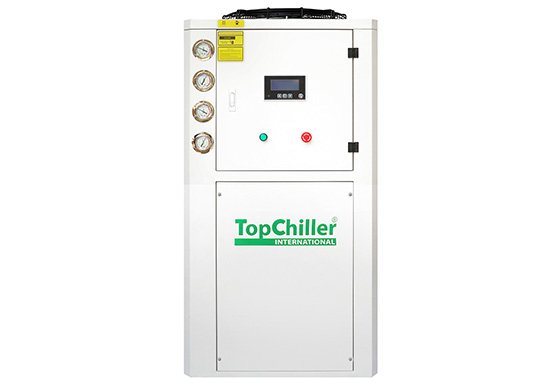
Process Chiller Designed by TopChiller
What are the Major Features of a Process Chiller?
The significant features of a Process Chiller include:
- The body is constructed of highly resistant stainless steel material.
- The double coating further prevents any corrosion and erosion.
- It comes with numerous valves and filters to allow the flow of clean fluids and air through the distribution system.
- Using a local area network, you can also operate your Process Chiller using an internet program like Firefox or Internet Explorer.
- Fans and motors can be used for enhancing its working efficiency.
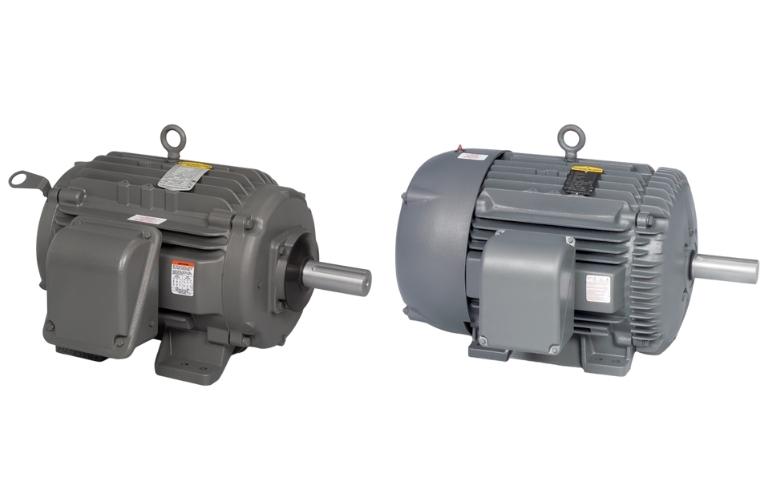
Process Chiller Explosion Proof Motor
What are the Necessary Components of a Process Chiller?
The main components of the Process Chiller include:
Condenser
It works by eliminating heat from the system as the refrigerant flows through its coils. Water or ambient air currents pass through the coils, and the heat travels from the higher level to the lower level, thus cooling the refrigerant.
Expansion Valve
It increases the volume and reduces the pressure of the refrigerant by allowing it to expand under low pressure.
The different types include
- Fixed and Hole Valve
- Electronic Valve
- Pilot Operated Thermal Valve
- Heat Valve
Compressor
It is the principal exchanger of heat as it increases the pressure and reduces the refrigerant volume. The process involves conversion from gas to liquid.
There are different types for different applications and cooling loads. The choice of compressor depends upon the principle of working.
Evaporator
It is situated between the expansion valve and the compressor. It is responsible for converting refrigerant from liquid to gaseous state to be quickly forced through the distribution system.
Power Panel
It deals with the power supply of the Process Chiller, thus making sure that it receives sufficient power for maximum output.
Control Unit
The primary purpose of a control unit is to coordinate all the components and regulate the function of the whole system. It works according to the adjusted settings and can be controlled remotely.

Process Chiller Compressor
What are the Types of a Process Chiller?
A Process Chiller can be categorized based on the following factors.
- Configurations
It can be classified into central and compact types based on the configuration.
Central
The working scope of the central type works in a range of – 30°F to 65°F. The cooling loads it can handle extend from less than 10 to more than 200 tons.
Compact
It is more flexible and ranges from 1 ton to 40 tons. It is more adaptable and can work around a good range of temperatures.
- Compressor Types
Based on the type of compressor and usage of a cooling agent, it can be classified as:
Air Cooled Process Chiller
A mechanized compressor is used in this type, which forces the air through the refrigerant coils. For optimum operation, the surrounding temperature should be 95°F.
It primarily deals with low cooling loads and requires a good supply of air and ventilation.
Water Cooled Process Chiller
It uses a water cooled condenser to decrease the refrigerant’s temperature flowing through the refrigerant coils. It needs a cooling tower and a steady supply of water.
The efficiency is high but at the expense of higher investment in the water supply and duct system.
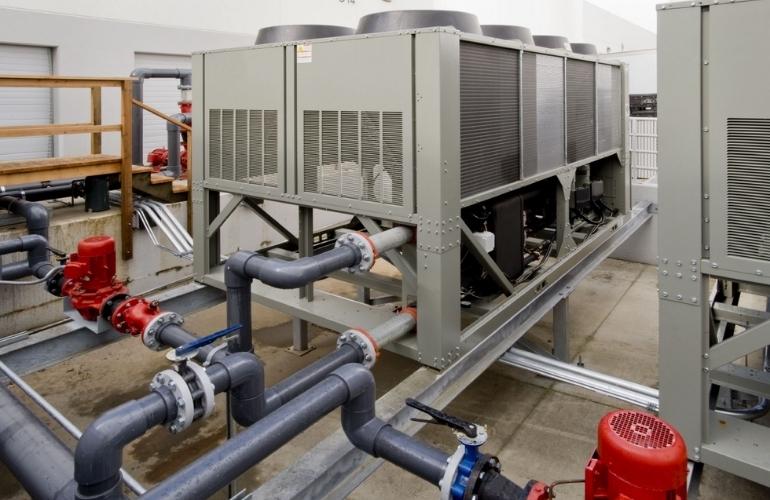
Compact Design Process Chiller
What is the Difference Between HVAC and a Process Chiller?
The difference between HVAC and Process Chiller is based on the following points:
Water and Refrigeration Circuit
A Process Chiller is equipped with two separate sets of circuits: a water circuit and a refrigeration circuit. Both these circuits have their distinct operation.
Even when one of the circuits fails, the other one keeps the system going.
On the other hand, HVAC has a combined set of refrigeration and water circuits. Both these circuits work in close coordination with each other. Fault in one of these can lead to the collapse of the whole system.
Applications
HVAC only controls the temperature and does not directly provide cooling to the environment. It’s best for office sittings, commercial areas, schools, and other domestic use.
On the other hand, a Process Chiller removes the heat from one place and transfers it to the environment. It primarily deals with industrial setups, processing factories, and high-tech machines.
In Winters
There is no function of an HVAC in winter since you don’t require cooling. However, a Process Chiller can perform the cyclical function and produce heating.
What is the Working Principle of a Process Chiller?
The working principle of a Process Chiller depends on the usage of air or water for heat transfer. The transition of refrigerant from one physical state to another also adds to the operation.
Phase 1:
The refrigerant flows through the evaporator and undergoes evaporation which is a cooling process.
The liquid refrigerant is converted into vapor form, and the vapor breaks free from the rest of the refrigerant by taking the energy.
It uses the process of vapor injection or vapor pressure to pump the vapor to the distribution pipes and eventually to the compressor.
At the ideal pressure of 50°F, the refrigerant moves towards the cold side of the chiller, that is, the compressor.
Phase 2:
The compressor performs two main functions. First of all, it makes sure that the vapors from the evaporator reach it as the evaporator pressure is maintained at a lower value.
Secondly, it guarantees that the temperature of the refrigerant leaving the evaporator remains sufficiently high.
Now high pressure is applied to the refrigerant to bring the molecules close together and decrease the volume.
Then it is fed to the condenser, where the vapor form is again converted into liquid form, and it is allowed to flow through the coils.
Phase 3:
Close contact of the coils with chilled water or airflow allows the highest heat transfer, and in this way, the system’s heat is transferred to the environment.
This heat can also be recaptured for making the Process Chiller work as a heating device.
The refrigerant is then fed back to the evaporator through the expansion valve, and the cycle begins again.
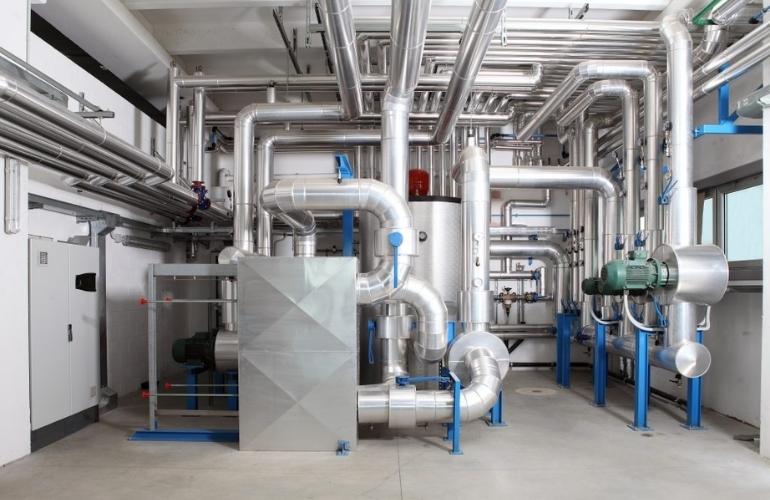
HVAC System
What are the Common Applications of a Process Chiller?
The typical applications of a Process Chiller include:
Electroplating
Aluminum anodizing and electrolysis require incredibly high temperatures to be effective. These processes are carried on to coat the metal surface to make it more stable and corrosion-resistant.
As it liberates high amounts of heat, it can be dangerous for laborers and the environment, so a Process Chiller is used.
Plastics Factories
Synthesis of plastic involves steps like thermoforming, expulsion, and enhancement. The soft plastic is forced through the extruder and then collected into molds.
There is a need for special temperature regulation as it passes through each step. It can be maintained by using a Process Chiller.
It is a high heat yielding process and requires a device to compensate for the cooling load.
Food Industry
It would be best to have a good temperature regulation for food processing since some require high and some require low temperatures for accurate results.
Therefore, you can choose a chiller to maintain the required range temperature.
Medical field
Machines like CT scans and MRIs run 24/7 in hospitals and laboratories. These areas need maximum temperature regulation to maintain the ambient temperature, which increases due to constantly running machines.
It also protects the machines by preventing overheating.
Welding and Cutting
As these processes are highly exothermic, a robust temperature regulation device is required to remove the heat constantly.
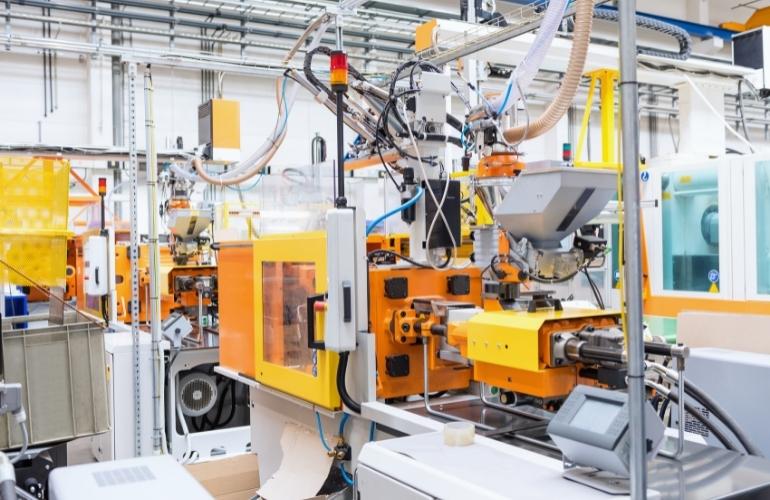
Process Chiller Application
What are the Advantages of Using a Process Chiller for your Application?
Using a Process Chiller can add to the productivity of your application through the following ways:
Steady Pressure
It can provide optimum pressure for maintaining a physical state and the occurrence of a physical process. This helps you produce a more reliable and accurate product.
Temperature Regulation
Most of the processes involve several steps where each step requires a specific temperature range. It is not easy to obtain these temperature ranges through conventional means.
Therefore, a Process Chiller is the best choice so that each process can take place at its optimum temperature.
Recycling of Refrigerant
As the refrigerant is being recycled, you don’t have to worry about the expenditure on the refrigerant. Although its level must be maintained, only a small amount of refrigerant is required.
Accuracy and Precision
With the help of the Process Chiller, you can obtain more accurate results, especially in the medical field, such as MRI and CT scan machines.
High temperature tends to alter the function of such heavy machinery, and therefore this heat must be removed for maximum efficiency.
Reduces Process Duration
The process duration is reduced because, with the help of the chiller, you obtain the results earlier as compared to conventional means, which takes a much longer time.
Close Monitoring
It enables you to monitor the function of your industry and processes. Due to the automated system, you can receive text notifications and alarms if there is any lag in the process because of a faulty chiller function.
Protective Function
Process Chiller performs the protective function by maintaining average ambient temperature, healthy for the people working in the area, and the constantly running machines.
When the machines are run for longer hours, they become overheated and can give rise to short circuits or ignition of a fire.
High Quality
Each process receives the best temperature and other conditions, leading to the perfect product. Although it is a one-time investment, it helps you save on money in the long run.
What are the Available Accessories for a Process Chiller?
You can add certain accessories to your Process Chiller to enhance its efficiency and increase the application’s productivity.
You can get each accessory customized according to your chiller’s size, model, and configuration.
Some of the major ones are listed here:
Protection Accessories
- Overheating Protection Device
- Water Flow Protection Device
- High/Low Protection Device
- Overload Compressor Protection Device
Some other accessories include:
- Voltage Monitors
- Multiple Language Interface And Keyboard
- Noise-Reducing Pads
- Acoustic Blanket for your Compressor
- Non-Reversible Heat Pumps
- Dual Point Power System
- Filters

Process Chiller Noise-Reducing Pads
How to Protect your Process Chiller from Scaling and Fouling?
As a Process Chiller is responsible for heat removal and temperature regulation in industries, it needs to be run 24/7 as the machines in the industries keep running. Longer hours of working tend to accumulate dirt, minerals, and sludge in the coils of the distribution system.
When the sludge deposits are left untreated for some time, more and more dust joins in and causes fouling and scaling.
The accumulations become hard and adherent to the surface such that it gets difficult to remove them.
It tends to narrow down the space and decrease the efficiency of your application. You must take the following preventive measures to avoid this situation:
- Keep a check on the water treatment and make sure it is according to the standards. This helps to obtain only clean and dirt-free water.
- The evaporator and condenser tubes must be cleaned thoroughly through an elaborate cleansing routine.
- All the distribution systems must be reviewed annually to locate any defect, leakage, or damage.
- Notice any drop in the pressure. When there is a sudden drop in pressure from inlet to outlet, it indicates some obstruction in the coil system. A 3-4 PSI drop in pressure shows fouling and scaling.
What are the Suitable Compressor Types for a Process Chiller?
The most commonly used and suitable compressors for a Process Chiller are mentioned below:
Rotary Screw Compressor
It is equipped with an internal cooling system and is most likely to have minimum maintenance requirements. The internal rotors work by turning in opposite directions.
Reciprocating Compressor
It has more moving parts and can only deal with small applications with lower cooling loads. It needs more maintenance in terms of lubrication and wear and tear of components.
Centrifugal Compressor
A diffuser is used to build potential energy, and it has a multi-phase process. High efficiency can be expected by using centrifugal force.
Others include:
- Frictionless Centrifugal Compressor
- Scroll Compressor

Process Chiller Rotary Screw Compressor
What are the Customization Options for your Process Chiller?
You can obtain a Process Chiller made exclusively for your application with the customization option.
Capacity
There is a wide variety of capacities offered by the manufacturers. You can opt for the closest to your cooling load, budget, etc.
Heat Exchanger and Tanks
You can choose variable frequency drive, low-level tank indicator alarm, fluid level monitor, tank fittings, etc.
Control Features
It can be made more advanced and efficient by using a touchscreen option, text and notifications alert from the alarms, fluid level indicator, manual or automatic interface, etc.
Redundancy
It is also an essential factor in the assessment of the operation. You can opt between a complete and a partial one.
Size
The size of your Process Chiller can be chosen according to the available space, size requirement, and capacity.
Coolant Choice
Water cooled or air cooled type is decided upon the basis of availability of water and air. Other factors like cost, elaborate duct system, external factors, and installation site also hold great importance.
How to Calculate the Cooling Capacity of your Process Chiller?
Cooling capacity refers to the maximum ability to regulate the temperature and produce cooling or heating accordingly. It can be calculated by using a simple formula.
Q = ṁ x Cp x ΔT
The temperature difference needs to be in kelvin, so we add 273.15K to the Celsius.
Cp stands for the specific heat capacity, and it is kJ per kg per kelvin.
M stands for the mass.
Putting the values in the above equation, you get the capacity of different types of Process Chillers. It usually depends upon the type of compressor being used, the size, and the kind of application it is working for.
You can increase the capacity of manifolds by adding to the number of compressors and using the correct type of compressor for dealing with the cooling load.
What Factors Shall be Considered Before Purchasing your Process Chiller?
You must consider the following factors before purchasing your Process Chiller:
Cooling Load of your Application
The higher the cooling load of your application, the greater the capacity and efficiency required to meet the cooling requirement.
Availability of Water and Air
You must decide the configuration of your chiller based on the availability of the coolant, such as air or water. You can go for a water cooled type if you have space for an extensive piping network and a cooling tower.
However, if you have good ambient air and a low budget, go for an air-cooled type.
Site of Installation
If it has to be installed indoors, it must have very low noise and vibration, or it will cause a lot of disturbance and unrest. Also, it should be smaller in size with a compact distribution system.
Ratings of the Manufacturer
You can either get help from the internet or talk to the Process Chiller users to get an idea about the performance and efficiency over time.
It is essential to compare and contrast to choose the most suitable one.
Efficiency With or Without Accessories
A Process Chiller having high efficiency without accessories is a better choice as you don’t have to invest in additional accessories. You can also see if the manufacturer provides any accessories.
What are Quality Control Checks for your Process Chiller?
Here are a few quality control checks that enable you to monitor the performance and indicate any lag in the performance of your Process Chiller.
Effective Manufacturing
It is the responsibility of the manufacturer to use premium quality raw materials and manufacture a product that is according to the accepted standards.
Certification
A Process Chiller must undergo proper inspection and assessment to obtain a certificate that proves it is efficient enough to meet the application requirements.
Factory Testing
All the factory tests must be run before the chiller leaves the manufacturing unit. It helps in assessing the change in performance with changes in external conditions.
This is also called factory acceptance testing, abbreviated as FAT.
How to Obtain Maximum Performance of your Process Chiller?
For obtaining maximum performance of your Process Chiller, take care of the following factors:
Monitor the Refrigerant Charge
Maintaining the proper refrigerant charge will help you obtain higher effectiveness because it allows the chiller to perform better.
When the refrigerant level is closely maintained, it is evident that there is no leakage in the system.
Right Compressor Choice
Using the most appropriate compressor is an essential point because it directly affects the capacity of a Process Chiller. You can add several compressors in series or parallel systems for higher efficiency.
Patency of the Duct System
With proper cleanliness and a maintenance routine, you can ensure no obstruction in the pipes. In this way, the coolant can flow with the desired velocity to give accurate heat exchange.
Other tips and tricks include:
- Inspect your chiller at once in four months and maintain a log.
- Rule out any possible refrigerant leaks.
- Verify that the operating pressure of the compressor is appropriate.
- Check all gas and unloader activities.
- Maintain excellent and steady electricity to maintain all motor voltages and amps.
- All electrical starters, relays, and contractors must be working correctly.
- Make sure you use superheat and subcooling temperature readings to achieve the highest efficiency.
- Get the line readings from the discharge lines.
What are the Installation Tips for Process Chiller?
Here are some of the installation tips and tricks you should pay attention to:
- Make enough room to accommodate the whole system and ensure sufficient ventilation. A congested system would give restricted efficiency.
- Select the installation site and prepare it by creating a slightly higher platform from the ground. It reduces the effect of extremely low temperatures.
- The electricity phase and voltage must be stable to allow the maximum working of the motors and compressors.
- The refrigerant choice must be made carefully, and there should be a reservoir for additional refrigerant in case of any loss.
- Whether it shall be installed outside or inside, sufficient measures for lubrication and maintenance of oil levels must be taken.

Process Chiller Installation
How to Deal With Operational Problems of your Process Chiller?
A few Process Chiller operational problems and their commonly seen solutions are mentioned below.
Failure to Switch On
Faults
- Insufficient voltage
- Poor connection
- Lack of insulation of wires
- Tripping of the circuit
- No electricity supply
- A wrong phase of electricity
- Unplugged wire
How to Fix
- Check the voltage and connection thoroughly.
- Make sure all the wires are properly insulated. It is for safety purposes and to avoid overheating.
- Use a circuit breaker.
Low Efficiency
Faults
- Poor electrical supply
- Insufficient water supply
- Low refrigerant level
- Damaged or broken component
- Incompetent compressor
- Tripped circuit
- Obstructed duct system
How to Fix
- Carry out a good maintenance routine
- Maintain electrical and steady water supply
- Keep a check on refrigerant and oil levels
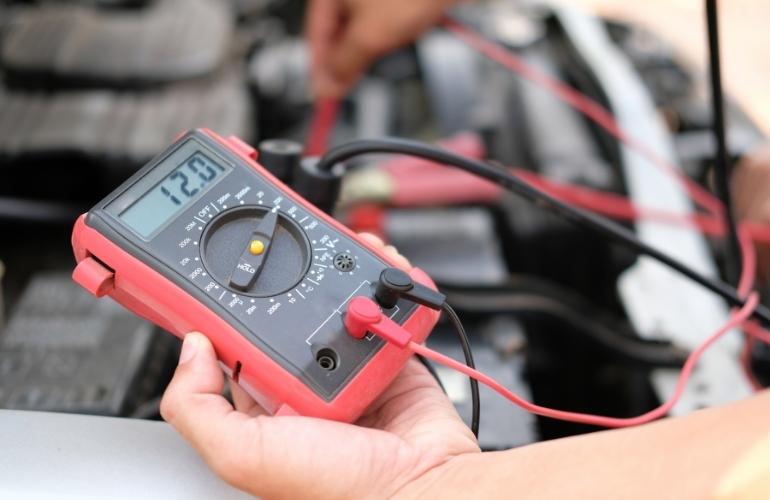
Process Chiller Voltage Checking

